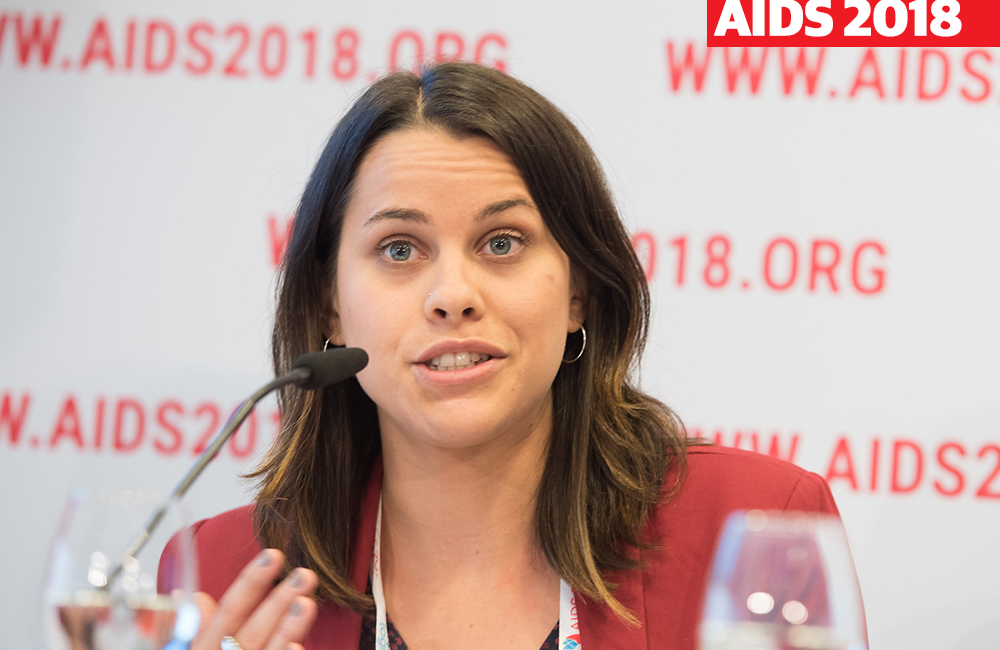
Africa is far off track in reducing new HIV infections among children and young people and is unlikely to reduce new infections in young people substantially before 2030 due to an anticipated doubling of the adolescent population, according to findings from a UNICEF modelling exercise presented on Thursday at the 22nd International AIDS Conference (AIDS 2018) in Amsterdam.
The study looked at what will happen as the population of children and adolescents grows in sub-Saharan Africa over the next few decades. While populations age in other parts of the world, notably in Europe and Asia, Africa will experience a 'youth bulge'.
The population of adolescents and young people aged 15 to 24 living in sub-Saharan Africa will almost double by 2050, whereas it will decline or remain stable in every other region of the world. HIV incidence among young women remains high and incidence is estimated to have declined by only 3% a year among young people since 2010. As the population of young people grows, the total number of young people living with HIV will also grow unless there is a greater and more sustained reduction in HIV incidence among young people.
To examine the impact of this demographic transition on HIV in young people, UNICEF took data from UNAIDS HIV estimates, UN population projections and other validated sources to develop projections of HIV incidence and prevalence until 2050 for 141 countries, including 46 countries in sub-Saharan Africa.
The findings were presented by Aleya Khalifa of UNICEF.
The model compared outcomes for two trends: the current trend in HIV incidence and antiretroviral coverage, and what might happen if the Fast Track goals for reducing HIV incidence and treatment coverage by 2020 (81% coverage) and 2030 (90% coverage) are achieved. The model also compared trends in treatment coverage for prevention of vertical (mother-to-child) transmission, based on the current trend or achievement of the Fast Track targets by 2020 (75% coverage) and 2030 (95% coverage).
The study found that if current trends prevail, although the number of new infections in children under five years of age will fall by half by 2030, to around 140,000 per year, new infections in adolescents (aged 15 to 19) will not be halved until 2050 and will still be running at a rate of approximately 200,000 per year in 2030.
But the study also found that countries are far from reaching the 2020 targets, let alone the 2030 targets, implying that the 'current trend' scenario is highly likely to play out unless major efforts are made to reach adolescents and prevent new infections in children.
Based on current trends, new infections in children will fall by only 42% by 2020, rather than the 95% goal set by international agreements.
The model finds that 1.9 million children and adolescents will be living with HIV by 2030, falling to 1 million by 2050.
Similarly, new infections in adolescent girls aged 15 to 19 will fall by only 28%, while infections in boys will fall by only 25%, far short of the 75% reduction envisaged in the Three Frees framework for an AIDS-Free Generation.
Aleya Khalifa said these projections “really should serve as a warning.”
The study also found that the impact of achieving Fast Track goals for treatment coverage would be most pronounced for new infections in adolescents. Whereas on the current trend, new infections among adolescent girls would fall by 42% by 2030, new infections would fall by 83% by 2030 if 90% treatment coverage could be achieved. A similar reduction in new infections could be achieved among adolescent boys.
Although the study found that, overall, new HIV infections will decline by 70% in Eastern and Southern Africa by 2050, no country in sub-Saharan Africa can expect to reduce new infections by 95% among adolescents and young people by 2030. Based on current trends and levels of prevention activities, UNICEF estimates that almost 10 million adolescents and young people will be infected with HIV between 2017 and 2050. Two-thirds of these infections will occur in young women.
The study estimates that only Botswana, Mozambique, Swaziland, Uganda and Zimbabwe will be able to achieve a 95% reduction in new infections among adolescents and young people by 2050. The share of new infections occurring in Western and Central Africa will grow, partly because of an especially fast increase in the child population in the region, but also because of slow progress towards the 2020 targets.
Khalifa A et al. Demographic transitions and the future of the HIV epidemic for children and adolescents. 22nd International AIDS Conference (AIDS 2018), Amsterdam, abstract THAC0105, 2018.
View the abstract on the AIDS 2018 website.
Download the presentation slides from the conference website.
